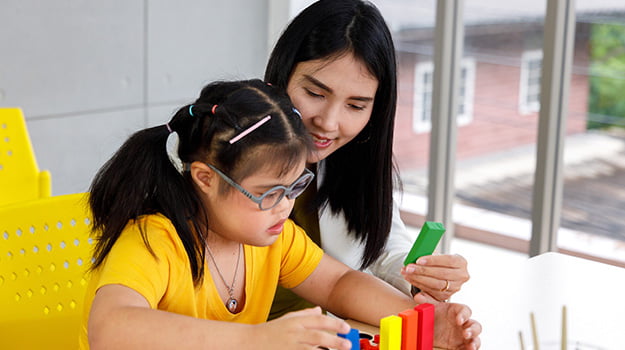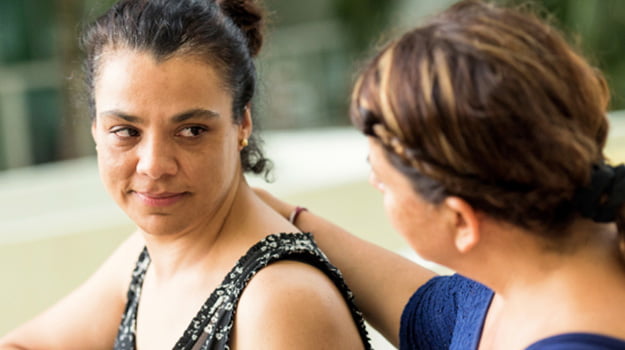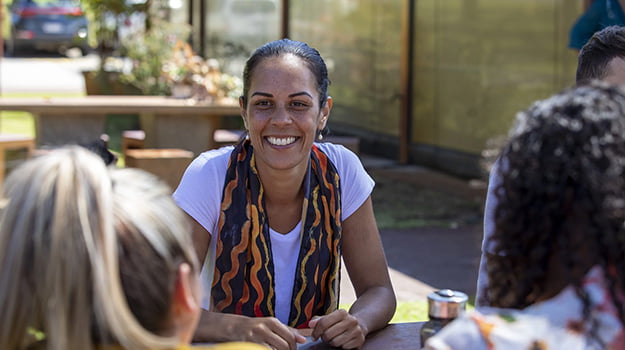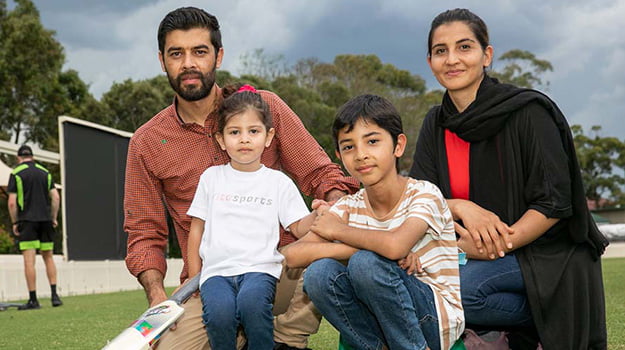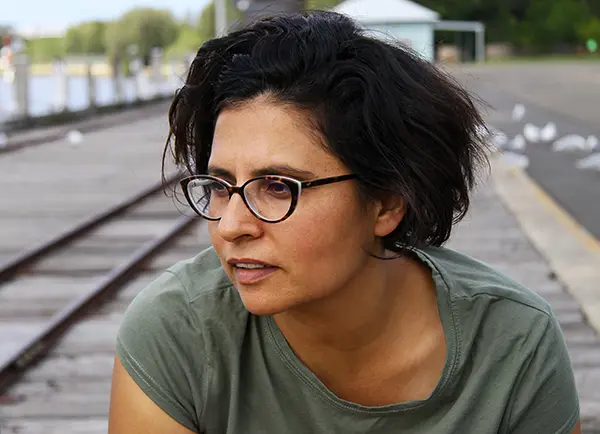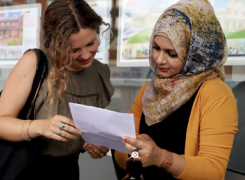Who are refugees?
Refugees are regular people who, through no fault of their own, have been forced to leave their homes in search of safety. People often have little or no warning before they are forced from their homes due to war or persecution, and many refugees have to undertake dangerous journeys to reach safety.
They must leave behind their family, friends and most or all of their belongings, and they cannot return unless the situation that forced them to leave improves. The 1951 Convention relating to the Status of Refugees, to which Australia is a signatory, defines a refugee as: “Any person who owing to a well founded fear of being persecuted for reasons of race, religion, nationality, membership of a particular social group or political opinion, is outside the country of his/her nationality and is unable, or owing to such fear, is unwilling to avail himself/herself of the protection of that country.”
This definition is used by the Australian Government to determine whether our country has protection obligations towards an individual. If a person is found to be a refugee, Australia is obliged under international law to offer protection and support and to ensure that they are not sent back unwillingly to the country of origin. (RCOA)
Who are asylum seekers?
An asylum seeker is a person who has sought protection as a refugee, but whose claim for refugee status has not yet been assessed. Many refugees have at some point been asylum seekers, that is, they have lodged an individual claim for protection and have had that claim assessed by a government or UNHCR. It is important to note that refugee status exists regardless of whether it has been formally recognised.
People do not “become” refugees at the point when their claims for protection are upheld – they were already refugees, and the assessment process has simply recognised their pre-existing status. People become refugees (and are entitled to international protection and assistance) from the moment they flee their country due to a well-founded fear of persecution, as stipulated in the Refugee Convention.
This means that a person can simultaneously be a refugee and an asylum seeker. Some refugees, however, do not formally seek protection as asylum seekers. During mass influx situations, people may be declared “prima facie” refugees without having undergone an individual assessment of their claims, as conducting individual interviews in these circumstances is generally impracticable (due to the large numbers involved) and unnecessary (as the reasons for flight are usually self-evident).
In other cases, refugees may be unable to access formal status determination processes or they may simply be unaware that they are entitled to claim protection as a refugee. While many refugees are, or have been, asylum seekers, not all asylum seekers are refugees. Some will be found to have valid claims for protection that entitle them to international protection and assistance. Others will be found not to be refugees, nor to be in need of any other form of international protection, and as such they are expected to return to their country of origin (RCOA).
What is the difference between a refugee and an asylum seeker?
An asylum seeker is a person who has sought protection as a refugee, but whose claim for refugee status has not yet been assessed. Every refugee has at some point been an asylum seeker. Those asylum seekers who are found to be refugees are entitled to international protection and assistance. Those who are found not to be refugees, nor to be in need of any other form of international protection, can be sent back to their country of origin. (RCOA)
What is the difference between a refugee and a migrant?
A migrant is a person who makes a conscious choice to leave their country to seek a better life elsewhere. Before they decide to leave their country, migrants can seek information about their new home, study the language and explore employment opportunities. They can plan their travel, take their belongings with them and say goodbye to the important people in their lives. They are free to return home at any time if things don’t work out as they had hoped, if they get homesick or if they wish to visit family members and friends left behind.
Refugees are forced to leave their country because they are at risk of, or have experienced persecution. The concerns of refugees are human rights and safety, not economic advantage. They leave behind their homes, most or all of their belongings, family members and friends. Some are forced to flee with no warning and many have experienced significant trauma or been tortured or otherwise ill-treated. The journey to safety is fraught with hazard and many refugees risk their lives in search of protection. They cannot return unless the situation that forced them to leave improves. (UNHCR)
What services do people receive when they arrive as refugees or humanitarian entrants?
Newly arrived humanitarian entrants have overcome incredible challenges to call Australia home. Many have undertaken dangerous journeys in search of safety and most arrive on our shores with just a suitcase to their name.
Humanitarian entrants receive services that aim to help them overcome these challenges and reach their full potential in Australia. These services fall under a number of different categories outlined below.
Government assistance to help new arrivals to settle takes account of their essential needs and circumstances. Basic settlement information is provided to all migrants and humanitarian entrants before they migrate to Australia. It is expected that skilled migrants, and sponsors of family migrants, will undertake their own more detailed research into settlement issues and that these migrants will generally be able to settle into the community and into work without needing a high level of government support. In recognition of their special needs and circumstances, humanitarian entrants are the highest priority for government-funded settlement services.
Migrants will generally use mainstream services provided by governments, community organisations and the private sector to address a number of their settlement needs. Many mainstream agencies, such as health and employment services, provide services to eligible migrants as they do to all eligible Australians, past the immediate settlement period.
Specialised settlement services are designed specifically to assist migrants and refugees with their critical early settlement needs. Services are provided by governments, the private sector and community organisations like SSI. Some specialist services, such as torture and trauma counselling services, are directed towards the special needs of humanitarian entrants.
Some of the specialised settlement services include:
- Adult Migrant English Program (AMEP)
- Complex Case Support (CCS)
- Humanitarian Settlement Program (HSP)
- Settlement Engagement and Transition Support (SETS) Program
- Translating and Interpreting Service (TIS)
SSI is one of the leading providers under the HSP program, which provides initial settlement support to families and individuals who have been granted a permanent visa under Australia’s humanitarian program. For more information on all of the above services click here.
Do refugees receive higher social security payments than age pensioners?
No. A refugee who has permanent residency in Australia receives exactly the same social security benefits as any Australian resident in the same circumstances.
A single person with no dependent children who is eligible for the Newstart Allowance (whether or not he or she is a refugee) will receive up to $559.00 per fortnight, whereas a single person on an Age Pension payment will receive a fortnightly payment of up to $850.40. A single age pensioner therefore receives over $200.00 more per fortnight more than a single refugee (or a single Australian citizen or permanent resident) who qualifies for the Newstart Allowance.
Australian citizens and permanent residents with dependent children on lower to middle incomes (including refugees) may also be eligible to receive Family Tax Benefits or Parenting Payments. However, none of these allowances are paid at a higher rate than the single age pension.
Refugees apply for social security through Centrelink like everyone else and are assessed for the different payment options in the same way as everyone else. The two-year waiting period for Centrelink eligibility that applies to other newly arrived permanent residents is waived for refugees and humanitarian entrants, in recognition of the fact that (unlike other migrants) they often arrive in Australia with few or no financial resources. However, Centrelink payments are calculated at exactly the same rate for both refugees and non-refugees and there are no separate Centrelink allowances that people can receive simply by virtue of being a refugee. (Parliament of Australia)
How many refugees does Australia settle each year?
The number of refugees Australia accepts has varied in recent years. Australia accepted and resettled 12,706 refugees during the 2018 calendar year (RCOA).
Where do Australia’s refugees come from?
Below is a list of refugee and humanitarian visas entrants by top 10 countries of origin from 2018 to 2019 by countries of birth: Iraq had 7,095, Congo (DRC) had 2,114, Myanmar had 1,995, Afghanistan had 1,323, Ethiopia had 635, Eritrea had 555, Iran had 367, Bhutan had 254 and Tibet had 189.

